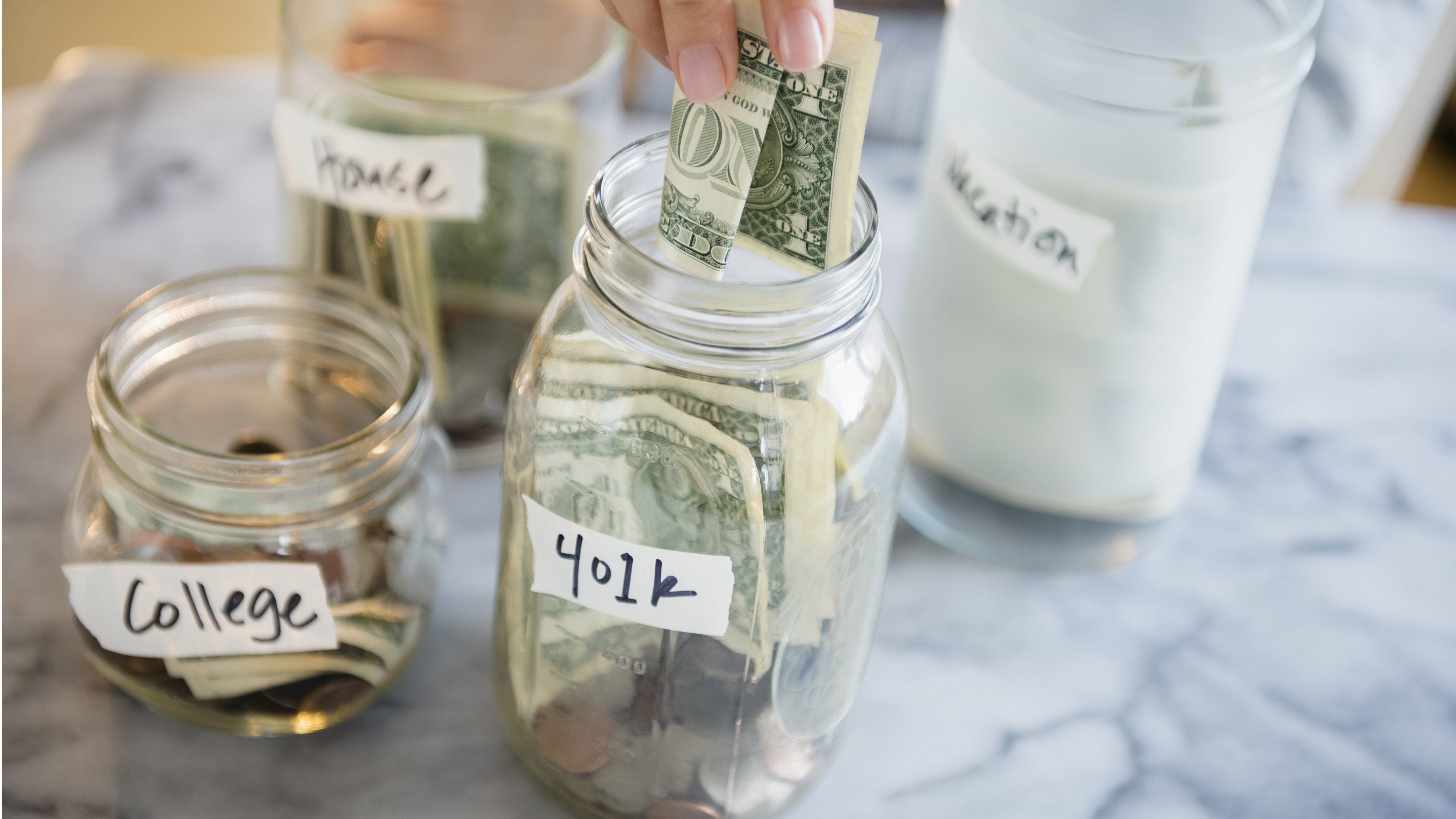To Auto-Increase or Not to Auto-Increase Your 401(k) Contribution Rate
Automatically increasing your 401(k) contribution rate can be a great way to boost your savings. But could your next dollar work better for you elsewhere?

During the past 30 years, there has been an important revolution in the administration of 401(k) plans. Often referred to as auto-increase or auto-escalation, here’s how it works: If you are automatically enrolled in a plan and don’t opt out of the auto-increase feature, then your deferral rate will increase over time, up to the plan maximum. The frequency, rate of increase and plan maximum can vary, but a common approach is an annual increase of 1 percentage point on the anniversary of your initial enrollment, up to a 10% maximum.
According to a 2021 study by the Plan Sponsor Council of America, more than half of all defined contribution plans have adopted an auto-escalation approach. It has also become increasingly common for plans with a default auto-increase provision to increase your rate above what is needed to receive the maximum employer matching contribution. For example, a plan that matches 100% of contributions up to 6% of pay deferred may automatically enroll you at 3% and then increase your rate by 1 percentage point per year until you reach a 10% auto-increase cap.
Most experts agree that, at a minimum, everyone participating in a plan offering a matching rate of 25% and higher should defer enough to receive the plan’s full matching contribution, as this “free money” provides a better rate of return than any alternative. For example, if the plan’s default deferral rate is 3%, but the plan matches 50% of contributions up to 6% of pay, you should (at a minimum) allow any rate increase to take place at least until reaching the 6% match-eligible deferral rate.

Sign up for Kiplinger’s Free E-Newsletters
Profit and prosper with the best of expert advice on investing, taxes, retirement, personal finance and more - straight to your e-mail.
Profit and prosper with the best of expert advice - straight to your e-mail.
Is an Auto-Increase in Your 401(k) Contributions Best?
If you can afford additional savings beyond getting the full employer matching contributions, you may question whether allowing additional voluntary (unmatched) 401(k) deferrals is the best use of your income. Or should you opt out of further rate increases to address other financial needs first?
Unfortunately, you won’t find this issue addressed in most benefit communications. They tend to treat each individual program (medical, dental, life insurance, 401(k), etc.) separately without considering how to allocate your income among the available choices, let alone consider other financial needs such as debt payment.
This is understandable given the almost infinite number of options available. So, how can you decide whether the best use of your money is to allow your deferral rate to automatically increase? While it’s not possible to recommend a single course of action, given each individuals’ unique circumstances, here are some alternatives to higher voluntary savings you might also consider.
Build Your Emergency Savings
Financial advisers stress the importance of having a side fund to pay unplanned expenses due to unforeseen events, such as a car accident, storm damage, unreimbursed medical expenses, etc. The amount you need depends on your annual income, but ideally you would start with at least $1,000 if you have no other savings. And pretax or Roth 401(k) contributions are not a good way to save for unexpected expenses for several reasons.
First, if you are under age 59½, the IRS will permit in-service withdrawals only for certain reasons that may not include emergency expenses. Further, the taxable portion of any withdrawal prior to age 59½ is subject to a 10% excise tax. The IRS also mandates that 20% of the taxable balances withdrawn – regardless of age – be withheld for federal income taxes.
Consider building emergency savings in a separate account outside of your 401(k) plan. Employers are starting to offer their employees help with funding these types of savings accounts by letting you contribute through regular payroll deductions.
Open a Health Savings Account (HSA)
When a person enrolls in a qualified high-deductible health plan (HDHP), employers may also offer their employees the ability to contribute to a health savings account (HSA) to pay for qualified medical expenses on a tax-preferred basis. Both 401(k) plans and HSAs offer the ability to save on a tax-preferred basis, but the HSA has additional tax benefits in saving for qualified health care expenses not available in a 401(k) plan per the chart below.

In saving for future health care expenses, most financial experts agree that you should prioritize funding your HSA up to the annual limit before making voluntary contributions to your 401(k) plan. In 2022, you can make HSA contributions up to $3,650 if you have self-only coverage or up to $7,300 for family coverage. If you are at least age 55, you are permitted an additional $1,000 in annual catch-up contributions.
There is even a school of thought that the tax benefits of an HSA are so valuable they should be prioritized over receiving matching contributions, depending on your tax bracket and matching rate. But if you aren’t willing to do a more sophisticated analysis, funding the HSA next after getting your full matching contribution is a good rule of thumb.
Pay Down Credit Card Debt
A 2021 survey by the American Bankers Association estimated that more than 100 million credit card accounts carry a monthly balance. And there is a high cost to carry that debt: The third-quarter 2022 average annual percentage interest rate (APR) on interest-accruing credit cards is now 18.43%, and this increases to 22.21% for new card offers.
Based on these figures, there are likely millions of people who must decide between contributing more to their 401(k) plan or paying down credit card debt. To help frame that decision, compare current credit card rates to a recent analysis by Fidelity Investments indicating that the average annual return of a diversified investment portolio over the past 75 years varied (depending on level of risk taken) from 5% to 9%.
So, for most people, your credit card debt will grow faster (based on the APR) than the assets available to service it. This indicates that it’s wise to prioritize paying down your credit card debt over adding to voluntary savings.
Further, paying down your credit card debt has the added benefit of lowering your credit utilization percentage (the amount owed to your creditors compared to the maximum credit available) and, in turn, raising your credit score. A better credit score not only can qualify you for a lower interest rate and higher credit limits on future borrowing, but potentially lowers future insurance rates, as well as reducing any upfront deposits required for cell phones, utilities and housing.
Most of the messages we see about retirement plans stress the importance of savings and needing to start as soon as possible. There is no doubt that adding default provisions to 401(k) plans has furthered those goals. But if you really want to enhance your overall financial wellness, consider other forms of savings (including eliminating debt) as well as additional voluntary contributions.
Get Kiplinger Today newsletter — free
Profit and prosper with the best of Kiplinger's advice on investing, taxes, retirement, personal finance and much more. Delivered daily. Enter your email in the box and click Sign Me Up.
Alan Vorchheimer is a Certified Employee Benefits Specialist (CEBS) and principal in the Wealth Practice at Buck, an integrated HR and benefits consulting, technology and administration services firm. Alan works with leading corporate, public sector and multi-employer clients to support the management of defined contribution and defined benefit plans.
-
 Before You Invest Like a Politician, Consider This Dilemma
Before You Invest Like a Politician, Consider This DilemmaAs apps that track congressional stock trading become more popular, investors need to take into consideration some caveats.
By Ryan K. Snover, Investment Adviser Representative
-
 How to Put Together Your Personal Net Worth Statement
How to Put Together Your Personal Net Worth StatementNow that tax season is over for most of us, it's the perfect time to organize your assets and liabilities to assess your financial wellness.
By Denise McClain, JD, CPA
-
 Before You Invest Like a Politician, Consider This Dilemma
Before You Invest Like a Politician, Consider This DilemmaAs apps that track congressional stock trading become more popular, investors need to take into consideration some caveats.
By Ryan K. Snover, Investment Adviser Representative
-
 How to Put Together Your Personal Net Worth Statement
How to Put Together Your Personal Net Worth StatementNow that tax season is over for most of us, it's the perfect time to organize your assets and liabilities to assess your financial wellness.
By Denise McClain, JD, CPA
-
 Bouncing Back: New Tunes for Millennials Trying to Make It
Bouncing Back: New Tunes for Millennials Trying to Make ItAdele's mournful melodies kick off this generation's financial playlist, but with the right plan, Millennials can finish strong.
By Alvina Lo
-
 Early-Stage Startup Deals: How Do Convertible Notes Work?
Early-Stage Startup Deals: How Do Convertible Notes Work?Some angel investors support early startups by providing a loan in exchange for a convertible note, which includes annual interest and a maturity date.
By Murat Abdrakhmanov
-
 SRI Redefined: Going Beyond Socially Responsible Investing
SRI Redefined: Going Beyond Socially Responsible InvestingNow that climate change has progressed to a changed climate, sustainable investing needs to evolve to address new demands of resilience and innovation.
By Peter Krull, CSRIC®
-
 Here's When a Lack of Credit Card Debt Can Cause You Problems
Here's When a Lack of Credit Card Debt Can Cause You ProblemsUsually, getting a new credit card can be difficult if you have too much card debt, but this bank customer ran into an issue because he had no debt at all.
By H. Dennis Beaver, Esq.
-
 Going to College? How to Navigate the Financial Planning
Going to College? How to Navigate the Financial PlanningCollege decisions this year seem even more complex than usual, including determining whether a school is a 'financial fit.' Here's how to find your way.
By Chris Ebeling
-
 Financial Steps After a Loved One's Alzheimer's Diagnosis
Financial Steps After a Loved One's Alzheimer's DiagnosisIt's important to move fast on legal safeguards, estate planning and more while your loved one still has the capacity to make decisions.
By Thomas C. West, CLU®, ChFC®, AIF®
